
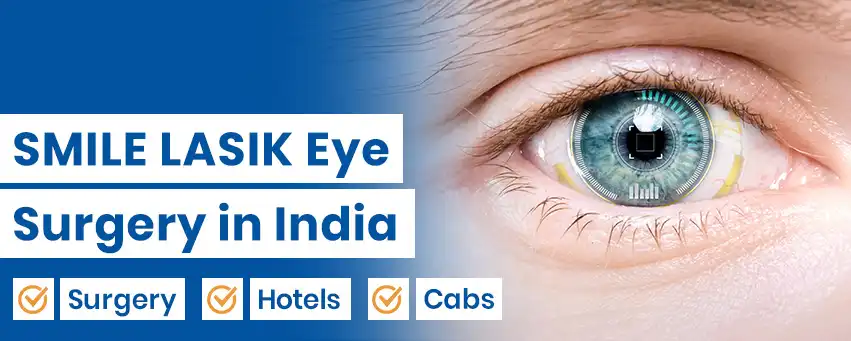
SMILE LASIK surgery has become a viable alternative to LASIK as a new laser method for nearsightedness correction. A laser vision repair procedure called SMILE (Small Incision Lenticule Extraction) is comparable to LASIK. Improvements have been made continuously since LASIK surgery was first introduced and made widely available.
A technique known as Small Incision Lenticule Extraction, or SMILE, was introduced in 2007 as a vision correction option. It was established throughout India in 2011. This process is a kind of femtosecond laser-assisted refractive surgery. SMILE excises a thin corneal lenticule and slices it rather than creating a thin flap on the cornea. Then, it is removed using a minimally invasive procedure (blade-free vision correction) that involves a minor incision that ranges from 2 to 4 millimeters. This flapless, blade-free eye surgery reduces the risk of complications, maintains corneal strength, and offers a swifter return to normal activities.
A growing number of African patients travel to India for SMILE LASIK eye surgery because of the country's affordable treatment, advanced laser technology, and internationally trained eye surgeons. In many African countries, SMILE technology may be limited or available only at select centers, often with long waiting times or higher costs. India’s leading eye hospitals for SMILE LASIK surgery offer the latest Zeiss VISUMAX SMILE platforms, experienced refractive surgeons, and comprehensive pre and post-operative treatments, all at highly affordable prices.
Indian hospitals provide comprehensive international patient support, including visa assistance, travel coordination, and interpreters. This page is an international patient's guide to availing SMILE LASIK eye surgery in India.
SMILE LASIK surgery is known to benefit a lot of patients. SMILE LASIK is a more suitable option for those who lead an active lifestyle or work than LASIK or similar operations. The possibility of corneal flap displacement is eliminated with SMILE LASIK eye surgery.
Some additional factors may aid in ascertaining the suitability for SMILE ocular surgery, such as:
SMILE eye surgery is a state-of-the-art laser vision correction technology with many benefits over conventional approaches. The following are the main advantages of SMILE LASIK surgery:
Around 2 million people visit India for medical treatment each year. People from 78 countries trust India’s advanced and successful treatment. CureIndia assists patients from all over the world with the most advanced vision correction procedures, like ReLEx SMILE, SMILE Pro, and LASIK eye surgery. Here, watch a patient’s smile laser eye surgery experience in his own words.
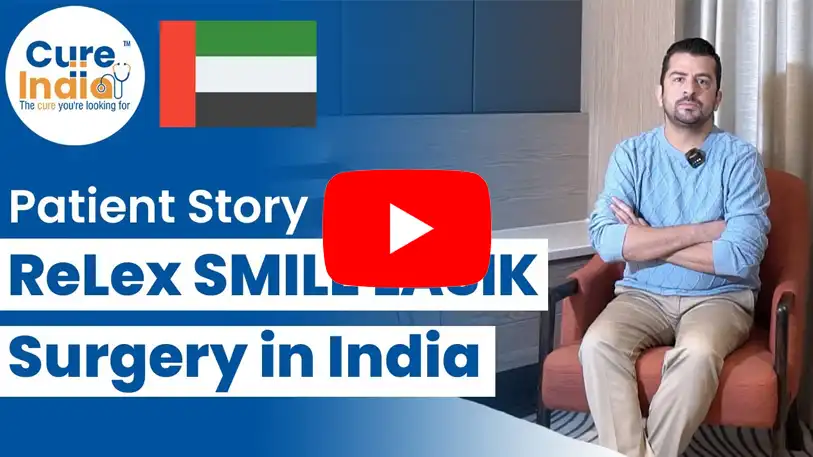
SMILE LASIK is an advanced refractive vision correction method. The process operates as follows:
The entire procedure takes very little time. The entire process is finished after less than 15 minutes for both eyes.
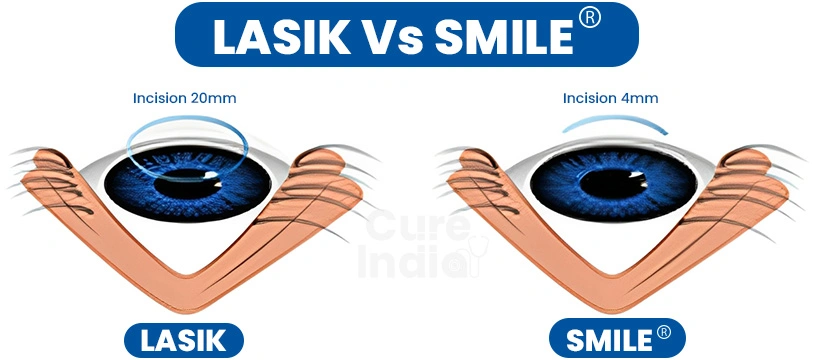
You might be stuck between SMILE vs. LASIK. They both are excellent choices for treating refractive problems. Following either approach, it has been demonstrated that satisfaction ratings are high. Since LASIK has been around longer, people are often more familiar with it. At this point, some clinics might still need to provide SMILE. When choosing between the two procedures, one must consider the restrictions of each technique regarding the qualifications of a potential candidate.
LASIK and SMILE are two laser-based refractive error correction techniques. SMILE has a narrower range of applications than LASIK, even though it is approved for use in astigmatism and hyperopia. You might only be a candidate for LASIK if you have hyperopia or if your myopia and astigmatism fall outside of the SMILE limits.
There are several advantages to not creating flaps during SMILE, like a lower chance of flap problems or dry eye. In contrast to LASIK, people with SMILE may take a little longer to recover their vision entirely. In the end, LASIK and SMILE are both safe operations.
SMILE Pro eye surgery takes only 10 seconds to perform a robotic surgical technology. As a result, more than 50 lakh eyes have received SMILE laser correction. Millennials nowadays prefer SMILE PRO over more conventional LVC treatments like LASIK or Contoura vision. This is because of its high precision and less time. The latest technology has quick recovery times. It also delivers generally excellent visual results, benefiting those with busy lifestyles.
SMILE Pro corrects refractive problems by reshaping the cornea. Your eye doctor will use a laser to change the shape of your cornea. Your retina will receive light with the proper focus, improving your eyesight. You don't need glasses or contact lenses.
There are several reasons to go for a SMILE Pro eye surgery, including:
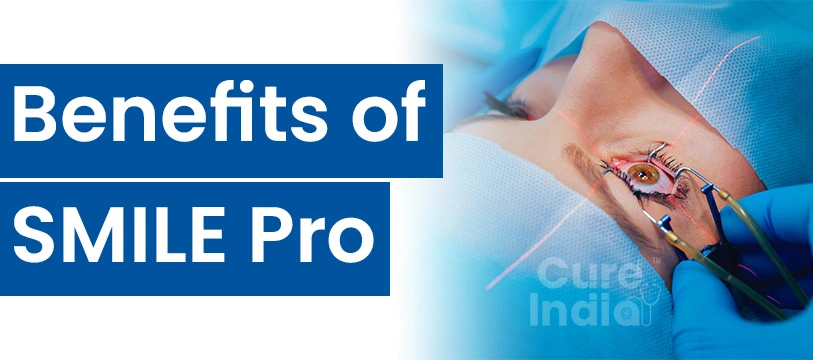
A robotic, flawless, minimally invasive, gentle, and nearly painless laser vision correction system. This is, in fact, the first robotic laser vision treatment in the world.
It only takes ten seconds to reshape your cornea, thanks to the quickest laser in vision correction history. Furthermore, the entire process only takes a few minutes.
Compared to previous laser vision correction procedures, SMILE PRO is gentler and less intrusive due to its robotic precision. To extract lenticules, a keyhole incision as small as 2 to 6 mm is created.
Most people resume their regular activities the following day.
SMILE PRO is intended to replace your contacts and glasses.
Patients who receive SMILE PRO benefit from corneal stabilisation and long-term eye health.
ReLEx SMILE incision is 1/5 the size of a LASIK incision. That allows SMILE to develop and manage regular tear film better. This is due to the SMILE laser vision correction disturbing far fewer corneal nerves.
As opposed to LASIK, this keeps the core corneal sensitivity closer to normal. Thus, there is improved maintenance of the tear-producing system. Dry eyes after surgery are therefore significantly decreased.
You can read Can you get LASIK with astigmatism? if you have queries about astigmatism and more on LASIK eye surgery.
According to trials, eyesight generally improves by 80% in a few hours. A few weeks after receiving SMILE therapy, it improved by 100%. Although recovery is quick, you should be aware that after the treatment, your vision may become slightly hazy for a short while. This is perfectly normal. At CureIndia, we provide the best SMILE LASIK surgery services in India and comprehensive aftercare to soothe your concerns.
Recalling that the recovery timetable of SMILE laser correction is a short process that gets you back to your regular self and way of life fast can be helpful. After about seven days, you can return to your normal activities. You can return to work in just one day, which is excellent.
CureIndia helps you discover the best doctors for your SMILE LASIK eye surgery in India. The eye surgeons with CureIndia are internationally trained and highly qualified to perform SMILE LASIK eye surgery. They operate using modern technology and advanced equipment, providing the best possible results. Let's hear from the top doctors for SMILE LASIK eye surgery in India:
Dr. Suraj Munjal is a leading ophthalmologist and refractive surgery expert with over 23 years of experience in performing SMILE LASIK, Contoura Vision, and cataract surgeries. As the founder of the Sight Avenue Hospital, he has successfully treated thousands of patients from India and abroad, earning recognition as one of the best doctors for SMILE LASIK eye surgery in India.
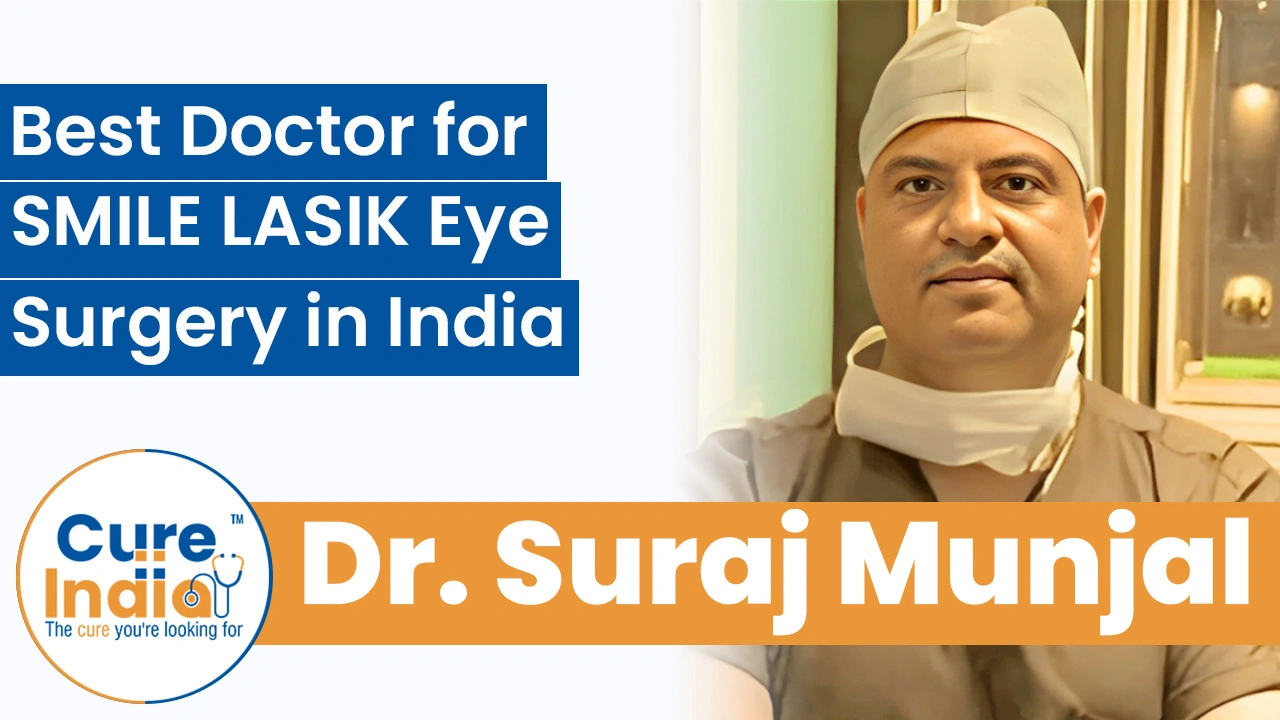
Dr. Suwarn Chetan is a top SMILE LASIK eye surgeon in India, known for his precision and patient-centric techniques. With extensive experience in refractive surgeries, phacoemulsification, and corneal transplants, Dr. Chetan specialises in providing clear and spectacle-free vision through the latest SMILE and LASIK technologies.
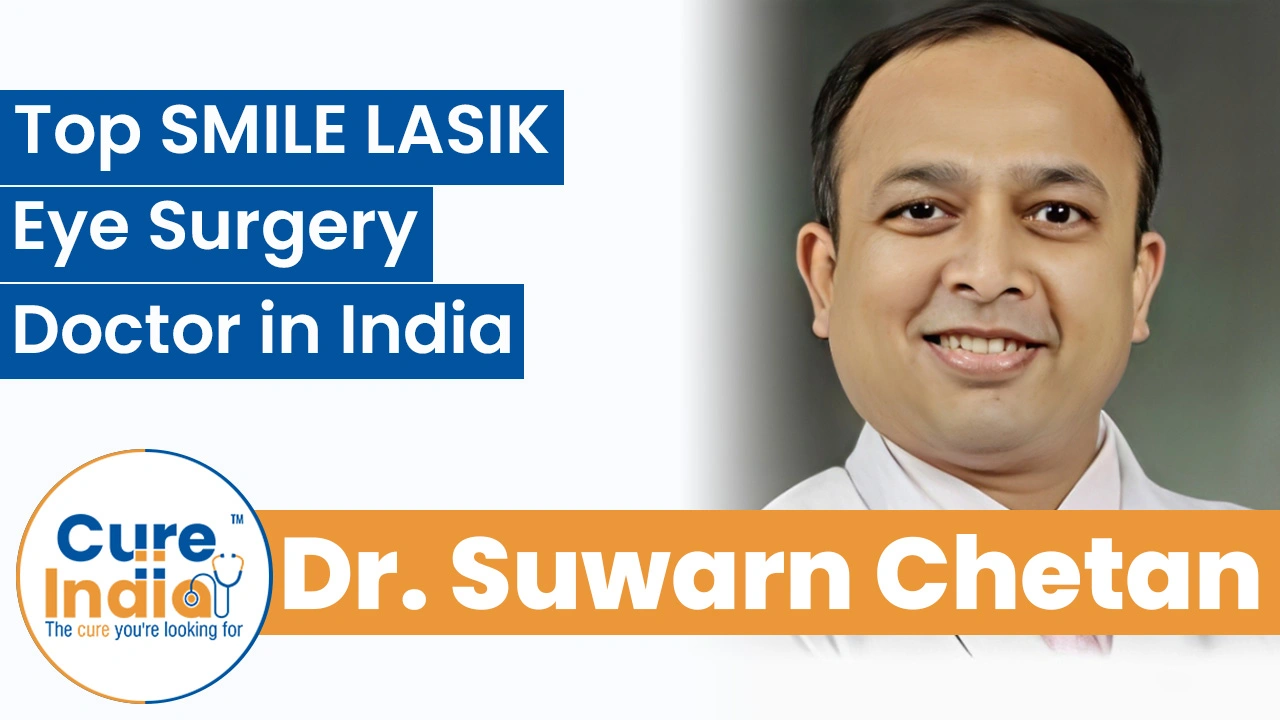
Dr. Neeraj Sanduja is a leading ophthalmologist and retina specialist recognised for his expertise in SMILE LASIK eye surgery in India. With over 26 years of experience, he has performed numerous successful refractive and retinal procedures. His areas of interest include retina and vitreous surgeries, diabetic eye care, pediatric ophthalmology, and refractive error correction.
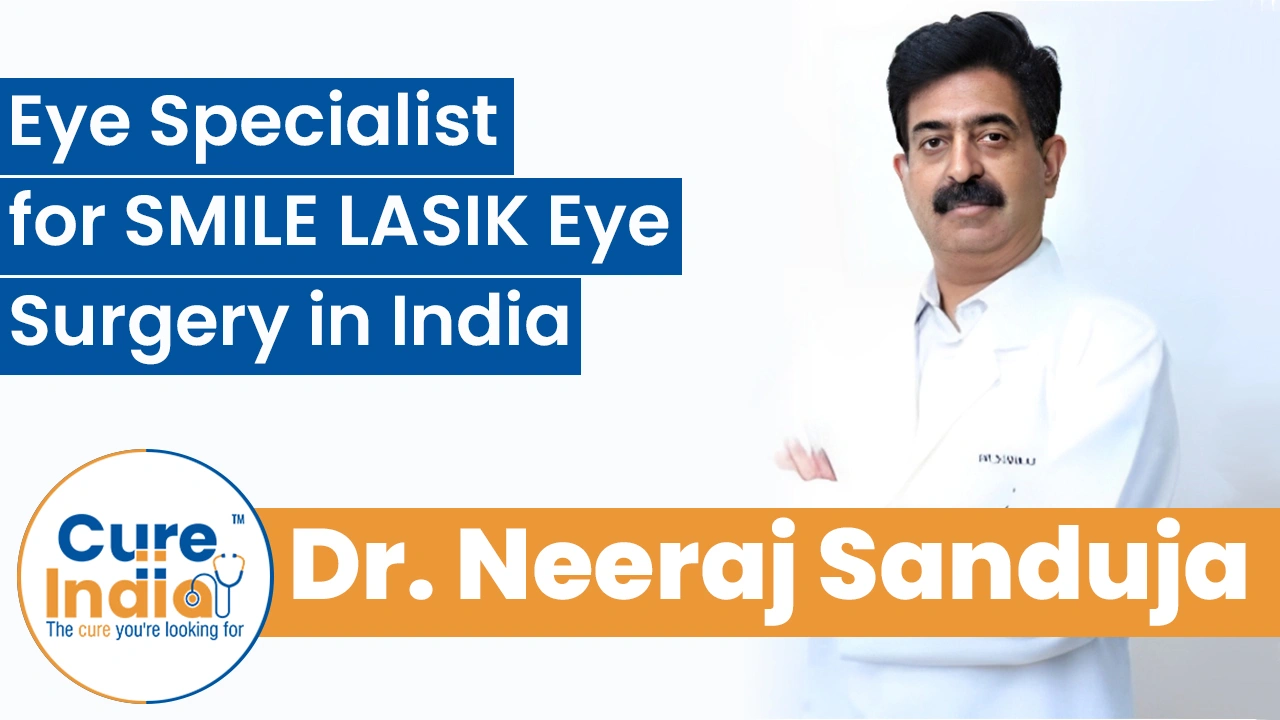
Dr. Sudipto Pakrasi is a leading ophthalmologist in India specialising in performing SMILE LASIK and advanced cataract surgeries. With around 43 years of experience in ophthalmic care, he is known for adopting laser technologies to deliver precise and safe results. His expertise spans glaucoma management, refractive surgeries, and corneal diseases.
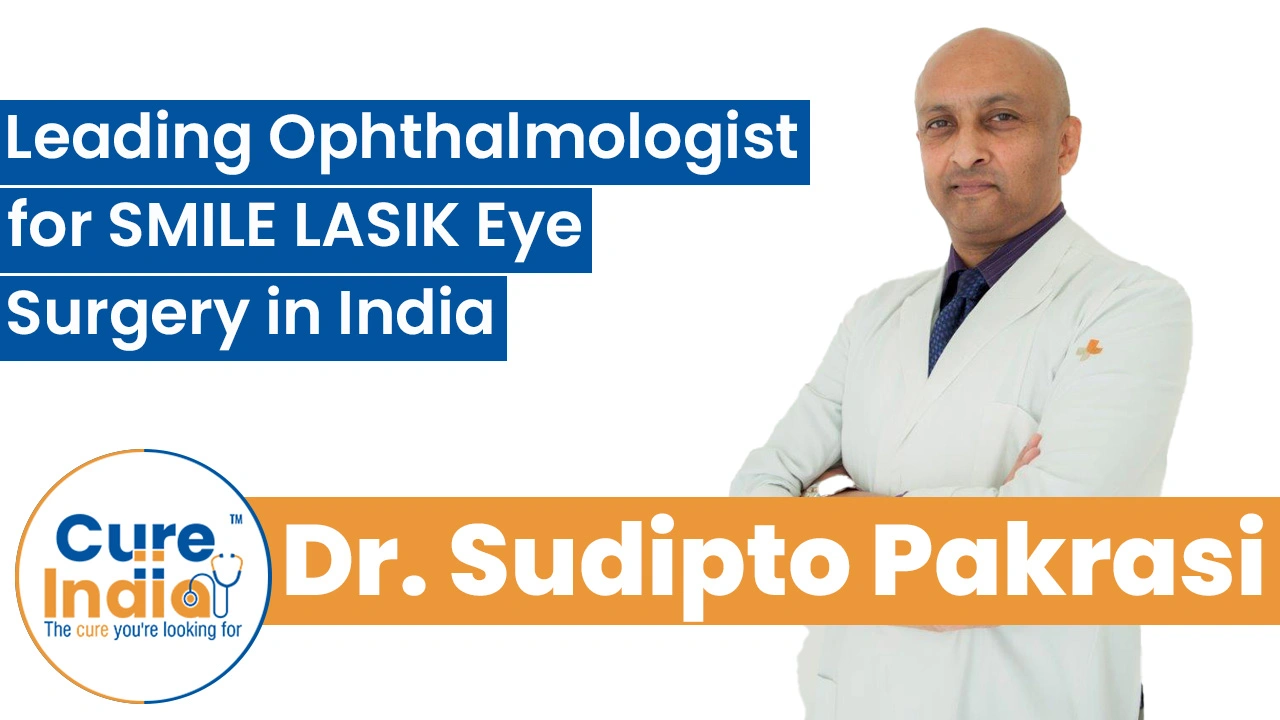
SMILE laser eye surgery price in India ranges around $2,000 to $2,500 for both eyes. The procedure cost is decreasing as SMILE gains popularity, and ophthalmologists find obtaining the necessary education and tools simpler.
The SMILE LASIK eye surgery costs in India are cheaper than in the USA, the UK, and Australia without compromising the quality of service. Eye correction can be reasonably priced, particularly if you combine your available payment methods. Consider all of your possibilities before deciding on undergoing any surgery.
| Treatment Name | Cost in India | Stay in India |
|---|---|---|
| SMILE LASIK Eye Surgery in India | $2,000 | 5 - 7 Days |

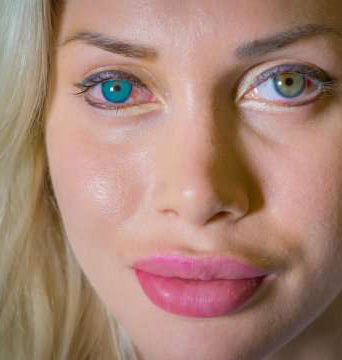
Get the Eye color you've always dreamed of
Connect Today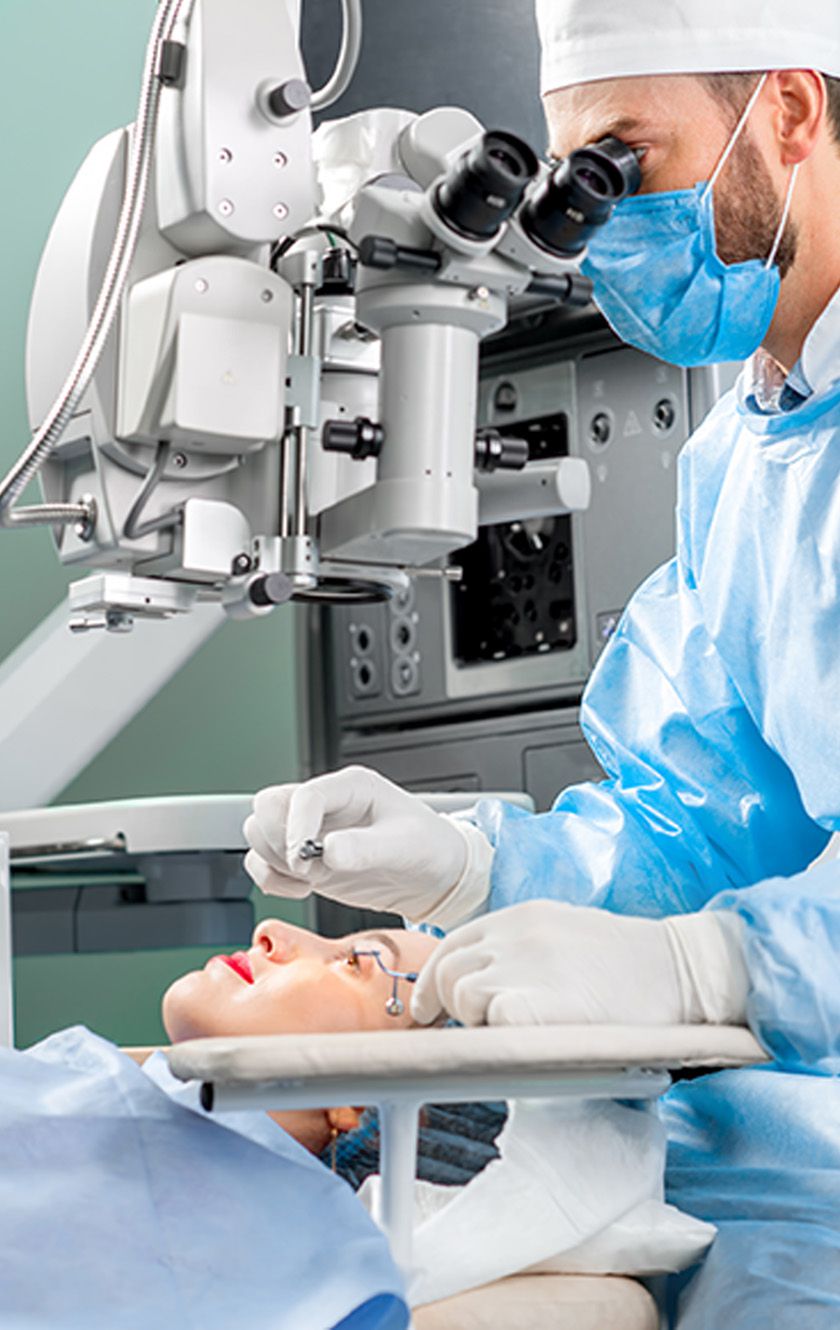
Opt for successful eye color change surgery
Plan Surgery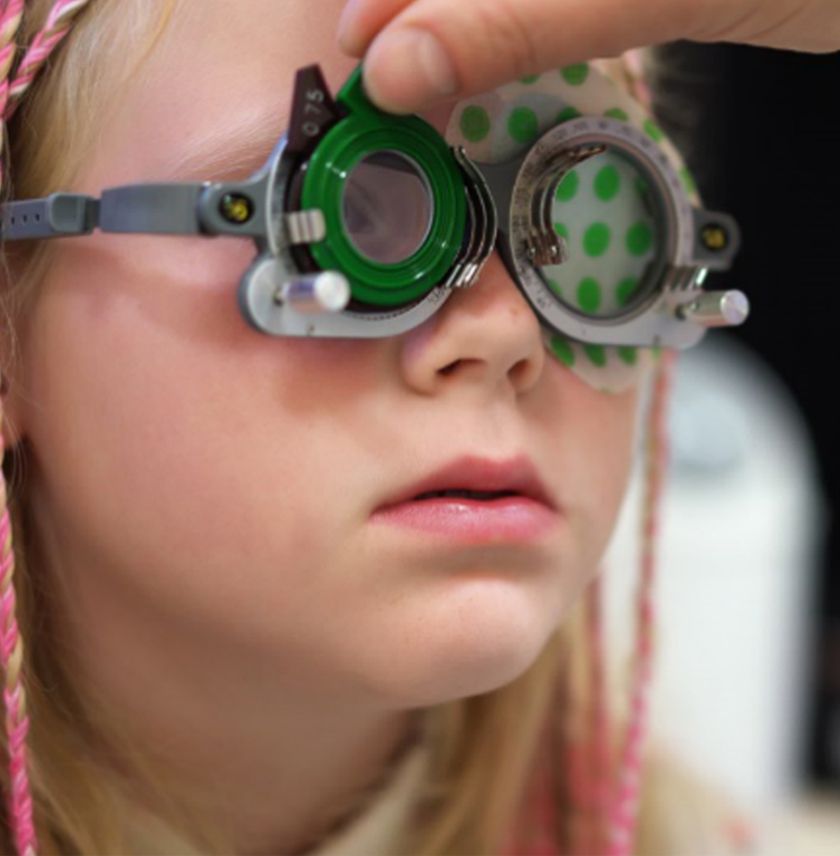
Remove glasses with SMILE LASIK
Get Cost